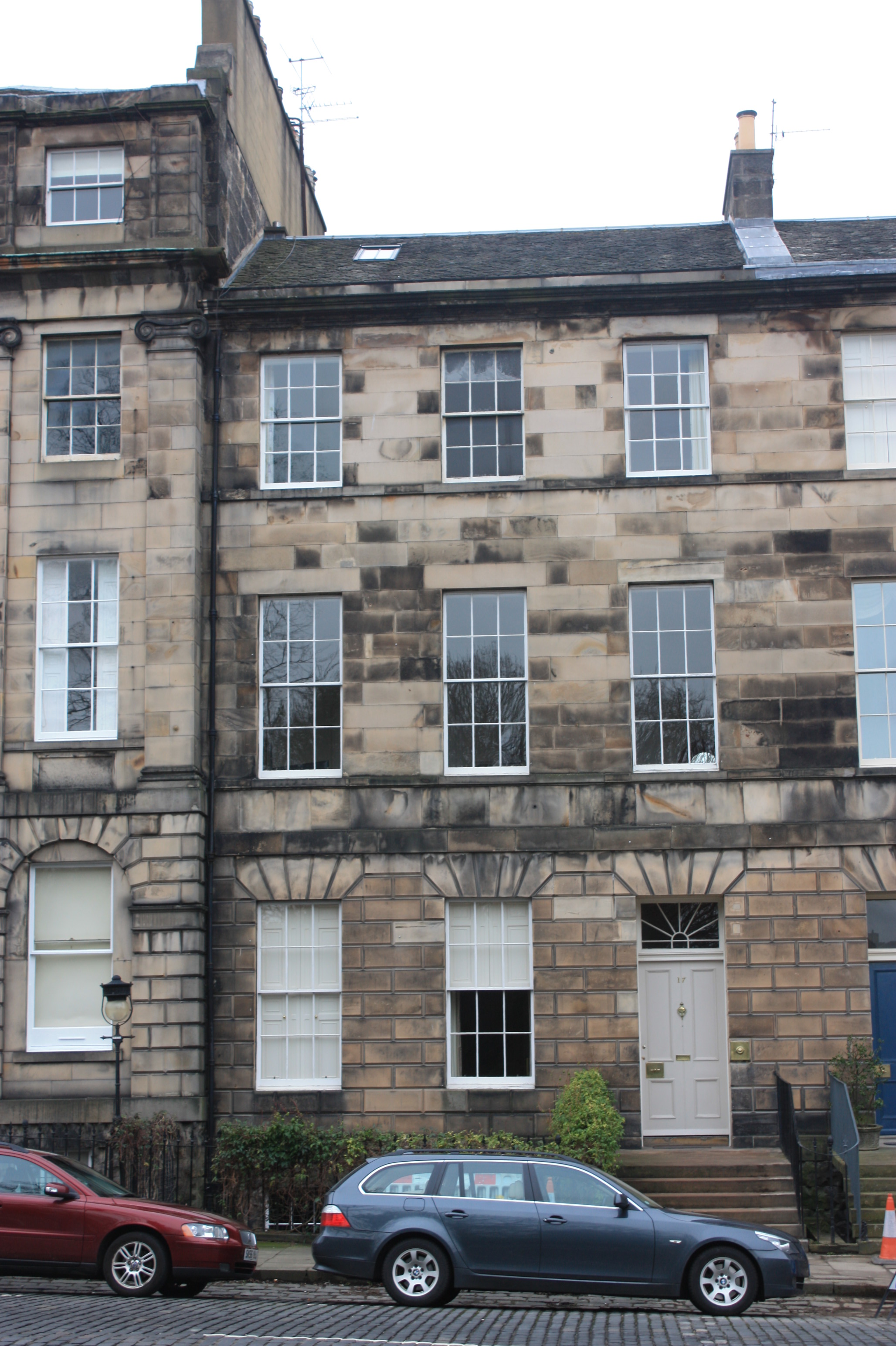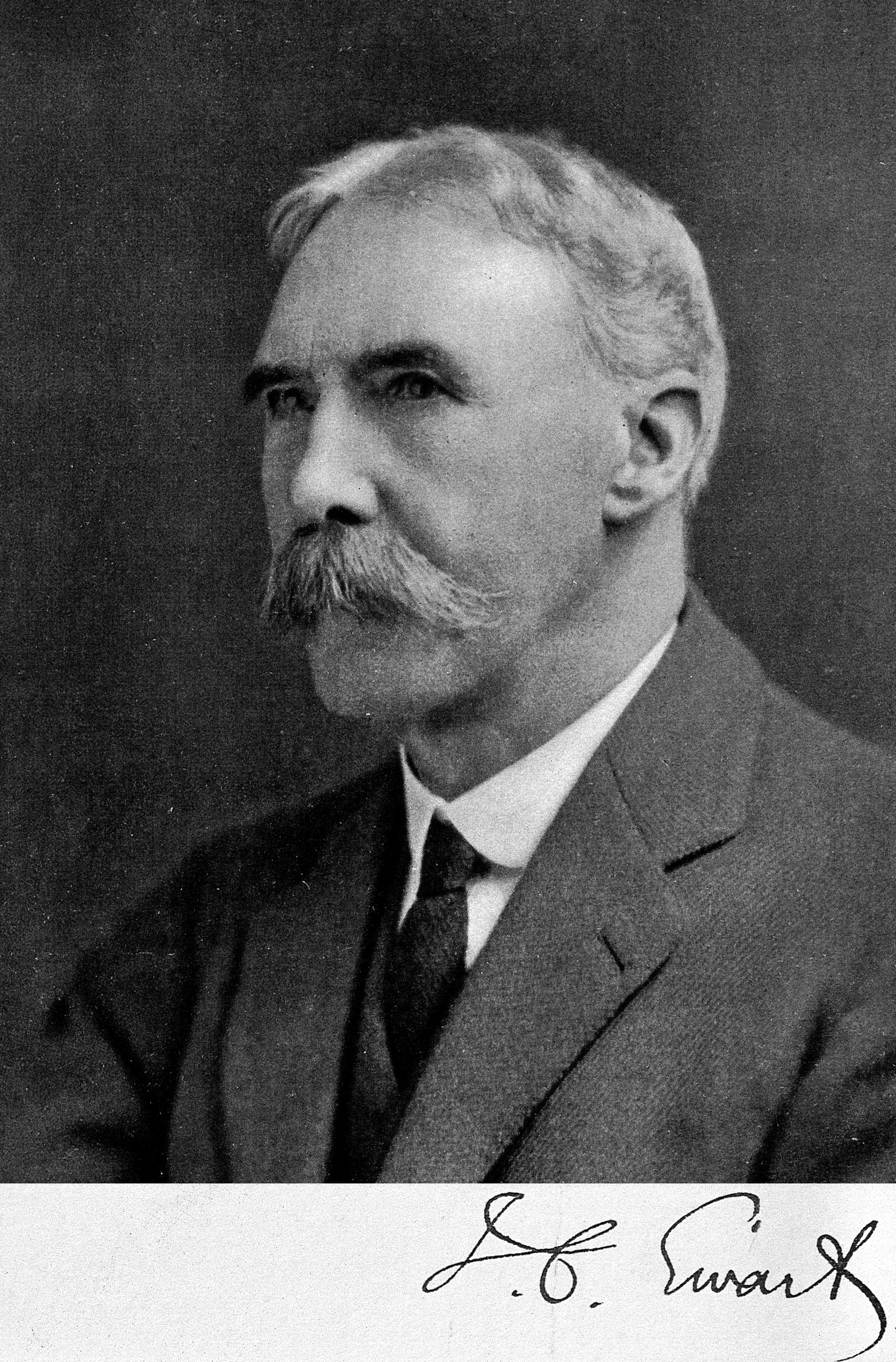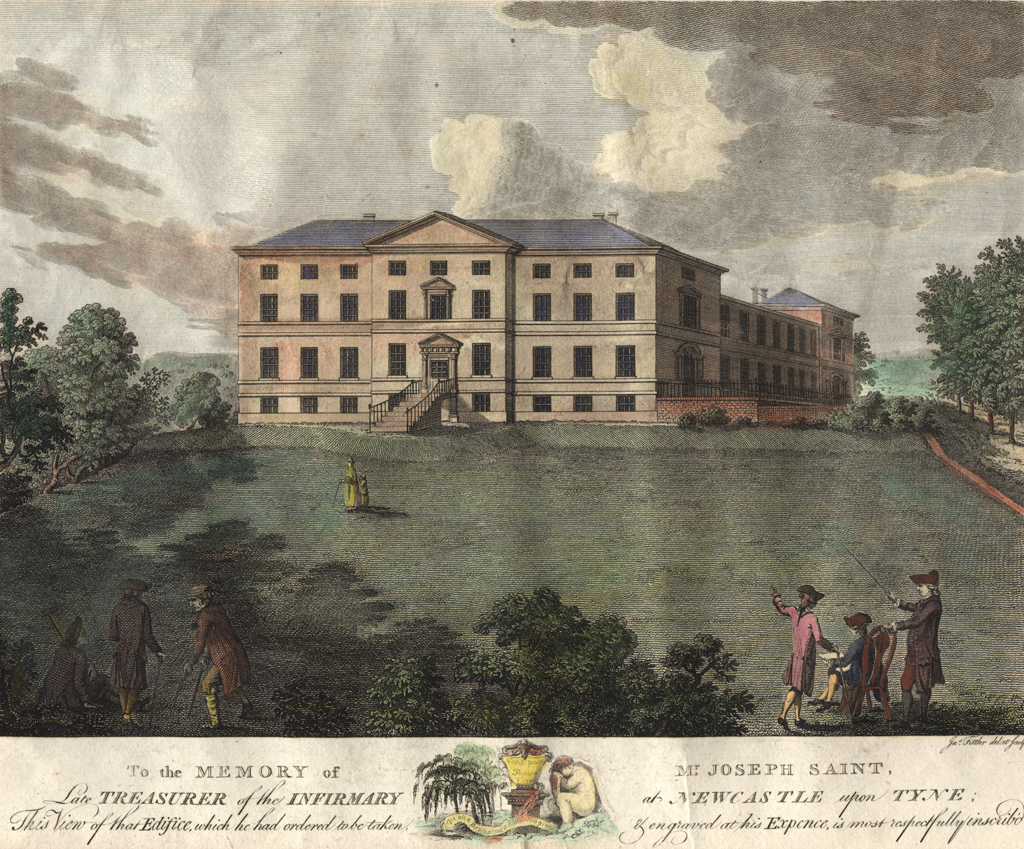|
Byrom Bramwell
Sir Byrom Bramwell FRSE FRCPE LLD (18 December 1847 – 27 April 1931) was an eminent British physician and medical author. He was a general physician, but became known for his work in neurology, diseases of the heart and blood, and disorders of the endocrine organs. He was president of the Royal College of Physicians of Edinburgh. Early life Bramwell was born on 18 December 1847 in North Shields in northern England, the son of Mary Young and Dr John Byrom Bramwell. He was educated at Cheltenham College and then in 1865 travelled to Scotland to study medicine at the University of Edinburgh. There he studied under the eminent anatomist, John Goodsir, as well as a number of other prominent Edinburgh physicians, including John Hughes Bennett, James Syme, and James Young Simpson. A keen sportsman, Bramwell also captained the University cricket team. Career In 1869 he became house surgeon under James Spence at the Royal Infirmary of Edinburgh, but his father’s sudden illness ... [...More Info...] [...Related Items...] OR: [Wikipedia] [Google] [Baidu] |
FRSE
Fellowship of the Royal Society of Edinburgh (FRSE) is an award granted to individuals that the Royal Society of Edinburgh, Scotland's national academy of science and letters, judged to be "eminently distinguished in their subject". This society received a royal charter in 1783, allowing for its expansion. Elections Around 50 new fellows are elected each year in March. there are around 1,650 Fellows, including 71 Honorary Fellows and 76 Corresponding Fellows. Fellows are entitled to use the post-nominal letters FRSE, Honorary Fellows HonFRSE, and Corresponding Fellows CorrFRSE. Disciplines The Fellowship is split into four broad sectors, covering the full range of physical and life sciences, arts, humanities, social sciences, education, professions, industry, business and public life. A: Life Sciences * A1: Biomedical and Cognitive Sciences * A2: Clinical Sciences * A3: Organismal and Environmental Biology * A4: Cell and Molecular Biology B: Physical, Engineering and ... [...More Info...] [...Related Items...] OR: [Wikipedia] [Google] [Baidu] |
John Goodsir
John Goodsir (20 March 1814 – 6 March 1867) was a Scottish anatomist and a pioneer in the formulation of cell theory. Early life Goodsir was born on 20 March 1814 in Anstruther, Fife, the son of Elizabeth Dunbar Taylor and John Goodsir (1742–1848), a medical practitioner in the town. He was baptised on 17 April 1814. His younger brother, Joseph Taylor Goodsir, entered the ministry and became minister in Lower Largo. His younger brother, Harry Goodsir, perished on the Franklin expedition.Kaufman MH. Harry Goodsir and the last Franklin expedition, of 1845. Journal of Medical Biography 2004; 12: 82–89 Another brother, Robert, (b. 1824) qualified as a doctor and sailed twice to the Arctic searching for his brother Harry. His youngest brother, Archibald, (b. 1826) qualified as a Member of the Royal College of Surgeons of England.Gardner, D. John Goodsir FRS (1814–1867): Pioneer of cytology and microbiology. J Med. Biog. 2015;25:114–122 In December 1 ... [...More Info...] [...Related Items...] OR: [Wikipedia] [Google] [Baidu] |
Peter Tait (physicist)
Peter Guthrie Tait FRSE (28 April 1831 – 4 July 1901) was a Scottish mathematical physicist and early pioneer in thermodynamics. He is best known for the mathematical physics textbook '' Treatise on Natural Philosophy'', which he co-wrote with Lord Kelvin, and his early investigations into knot theory. His work on knot theory contributed to the eventual formation of topology as a mathematical discipline. His name is known in graph theory mainly for Tait's conjecture. He is also one of the namesakes of the Tait–Kneser theorem on osculating circles. Early life Tait was born in Dalkeith on 28 April 1831 the only son of Mary Ronaldson and John Tait, secretary to the 5th Duke of Buccleuch. He was educated at Dalkeith Grammar School then Edinburgh Academy. He studied Mathematics and Physics at the University of Edinburgh, and then went to Peterhouse, Cambridge, graduating as senior wrangler and first Smith's prizeman in 1852. As a fellow and lecturer of his college he remain ... [...More Info...] [...Related Items...] OR: [Wikipedia] [Google] [Baidu] |
Robert Gray (ornithologist)
Robert Gray FRSE (15 August 1825 – 18 February 1887), was a Scottish banker and famed amateur ornithologist. Life Gray was born at Dunbar on 15 August 1825, the son of Archibald Gray, a Dunbar merchant. He was educated at the parish school in Dunbar. At the age of fifteen he became an apprentice in the branch of the British Linen Company Bank. Five years afterwards he joined the head office of the City of Glasgow Bank. Here he attained the position of inspector of branches, an appointment which had an important influence upon his scientific pursuits. From early years he had been addicted to the study of natural history. He soon adopted ornithology as his speciality. He became the inspector of the bank's branches and during his frequent inspections he studied the local birds. The note-books and their illustrations by his skilful pencil, formed the basis of his ‘Birds of the West of Scotland,’ published in 1871. In 1851 Gray was one of the founders of the Natural History Soci ... [...More Info...] [...Related Items...] OR: [Wikipedia] [Google] [Baidu] |
James Cossar Ewart
James Cossar Ewart FRS FRSE (26 November 1851 – 31 December 1933) was a Scottish zoologist. He performed breeding experiments with horses and zebras which disproved earlier theories of heredity. Life Ewart was born in Penicuik, Midlothian, Scotland, the son of Jean Cossar and John Ewart, a joiner. He studied medicine from 1871 to 1874 at the University of Edinburgh where he graduated with an MB ChB. After graduation, he became an anatomy demonstrator under William Turner and then held the position of Curator of the Zoological Museum at University College, London, where he assisted Ray Lankester (later director of the Natural History Museum) by making zoological preparations for the museum and providing teaching support for Lankester's course in practical zoology. In 1878 he returned to Scotland to take a post of Regius Professor of Natural History at the University of Aberdeen from where he moved to the University of Edinburgh in 1882, staying in the post until 1927. ... [...More Info...] [...Related Items...] OR: [Wikipedia] [Google] [Baidu] |
William Turner (anatomist)
Sir William Turner (7 January 1832, in Lancaster – 15 February 1916, in Edinburgh) was an English anatomist and was the Principal of the University of Edinburgh from 1903 to 1916. Life Turner was born in Lancaster the son of William Turner a relatively rich cabinetmaker, and his wife, Margaret Aldren. He was educated at various private schools, and then apprenticed to a local physician, Dr Christopher Johnston. He afterwards studied medicine at St. Bartholomew's hospital, and graduated M.B. from the University of London in 1857. In 1854 he became senior demonstrator in anatomy at the University of Edinburgh. He lived in rooms at Old College. In 1861 he was elected a Fellow of the Royal Society of Edinburgh, his proposer being John Goodsir. He served as the society's secretary from 1869 to 1891, twice as vice president from 1891 to 1895 and from 1897 to 1903, and as president from 1908 to 1913. He won the society's Neill Prize for 1868 to 1871 and the Keith Prize for ... [...More Info...] [...Related Items...] OR: [Wikipedia] [Google] [Baidu] |
Royal Society Of Edinburgh
The Royal Society of Edinburgh is Scotland's national academy of science and letters. It is a registered charity that operates on a wholly independent and non-partisan basis and provides public benefit throughout Scotland. It was established in 1783. , there are around 1,800 Fellows. The Society covers a broader selection of fields than the Royal Society of London, including literature and history. Fellowship includes people from a wide range of disciplines – science & technology, arts, humanities, medicine, social science, business, and public service. History At the start of the 18th century, Edinburgh's intellectual climate fostered many clubs and societies (see Scottish Enlightenment). Though there were several that treated the arts, sciences and medicine, the most prestigious was the Society for the Improvement of Medical Knowledge, commonly referred to as the Medical Society of Edinburgh, co-founded by the mathematician Colin Maclaurin in 1731. Maclaurin was unhappy ... [...More Info...] [...Related Items...] OR: [Wikipedia] [Google] [Baidu] |
Extramural Medical Education In Edinburgh
Extramural medical education in Edinburgh began over 200 years before the university medical faculty was founded in 1726 and extramural teaching continued thereafter for a further 200 years. Extramural is academic education which is conducted outside a university. In the early 16th century it was under the auspices of the Incorporation (later Royal College) of Surgeons of Edinburgh (RCSEd) and continued after the Faculty of Medicine was established by the University of Edinburgh in 1726. Throughout the late 18th and 19th centuries the demand for extramural medical teaching increased as Edinburgh's reputation as a centre for medical education grew. Instruction was carried out by individual teachers, by groups of teachers and, by the end of the 19th century, by private medical schools in the city. Together these comprised the Edinburgh Extramural School of Medicine. From 1896 many of the schools were incorporated into the Medical School of the Royal Colleges of Edinburgh under th ... [...More Info...] [...Related Items...] OR: [Wikipedia] [Google] [Baidu] |
Kirk Duncanson
Dr John Janet Kirk Duncanson (usually referred to as J J Kirk Duncanson) FRSE FRCPE (1846–1913) was a Scottish surgeon and botanist, running the Ear, Nose and Throat section of the Edinburgh Royal Infirmary. The Kirk Duncanson Fellowship for Medical Research is named in his honour. Some documents give his name as John James Kirk Duncanson, but John Janet better explains his use of J J and appears on most official documents. He was a noted amateur botanist which led to his being made a Fellow of the Royal Society of Edinburgh. Life He was born around 1846 near Dunfermline the son of Thomas Duncanson (born 1809) and his wife, Euphemia Faulds. He had two sisters: Helen Frances and Mary. His sister Mary Duncanson married a botanist, Professor Saddler, possibly meeting Saddler through her brother's botanical interests. Kirk was educated at Dollar Academy and then the Edinburgh Institution (now known as Stewart's Melville College), originally training to be an engineer. But influence ... [...More Info...] [...Related Items...] OR: [Wikipedia] [Google] [Baidu] |
Newcastle Royal Infirmary
The Royal Victoria Infirmary (RVI) is a 673-bed tertiary referral hospital and research centre in Newcastle upon Tyne, England, with strong links to Newcastle University. The hospital is part of the Newcastle upon Tyne Hospitals NHS Foundation Trust and is a designated academic health science centre. History The original hospital was the Newcastle upon Tyne Infirmary at Forth Banks which was funded by way of public subscription. The foundation stone was laid by Joseph Butler, the Bishop of Durham, on 5 September 1751 and it opened on 8 October 1752. By the end of the 19th century, despite major extensions including the Dobson Wing which opened in 1855 and the Ravensworth Wards which opened in 1885, the infirmary became overcrowded and needed to be replaced. A new hospital to be known as the Royal Victoria Infirmary was designed by William Lister Newcomb and Percy Adams and built on of Town Moor given by the Corporation and Freemen of the City of Newcastle upon Tyne. It was op ... [...More Info...] [...Related Items...] OR: [Wikipedia] [Google] [Baidu] |
Edinburgh Royal Infirmary
The Royal Infirmary of Edinburgh, or RIE, often (but incorrectly) known as the Edinburgh Royal Infirmary, or ERI, was established in 1729 and is the oldest voluntary hospital in Scotland. The new buildings of 1879 were claimed to be the largest voluntary hospital in the United Kingdom, and later on, the Empire."In Coming Days" The Edinburgh Royal Infirmary Souvenir Brochure 1942 The hospital moved to a new 900 bed site in 2003 in Little France. It is the site of clinical medicine teaching as well as a teaching hospital for the University of Edinburgh Medical School. In 1960, the first successful kidney transplant performed in the UK was at this hospital. In 1964, the world's first coronary care unit was established at the hospital. It is the only site for liver, pancreas and pancreatic islet cell transplantation and one of two sites for kidney transplantation in Scotland. In 2012, the Emergency Department had 113,000 patient attendances, the highest number in Scotland. It is man ... [...More Info...] [...Related Items...] OR: [Wikipedia] [Google] [Baidu] |
James Spence (surgeon)
James Spence FRSE FRCSEd (1812-1882) was a Scottish surgeon. He served as President of the Royal College of Surgeons of Edinburgh 1867/68. Life He was born on 31 March 1812 at 12 South Bridge in Edinburgh, the son of James Spence, a perfumer, and his third wife. He was educated at a boarding-school in Galashiels and afterwards at the Royal High School, Edinburgh. He studied medicine at the University of Edinburgh, but left to be apprenticed to Messrs. Scott & Orr, a firm of Edinburgh chemists, at 100 South Bridge. He managed, however, to complete his medical education in the Edinburgh Extramural School of Medicine and in 1832 received the diploma of Licentiate of the Royal College of Surgeons of Edinburgh. On qualifying he made two voyages to Calcutta in 1833 as surgeon to an East Indiaman, but returned to Edinburgh to teach anatomy for 7 years as the university demonstrator under Professor Alexander Monro tertius. He then joined the extramural school of anatomy to act as de ... [...More Info...] [...Related Items...] OR: [Wikipedia] [Google] [Baidu] |







